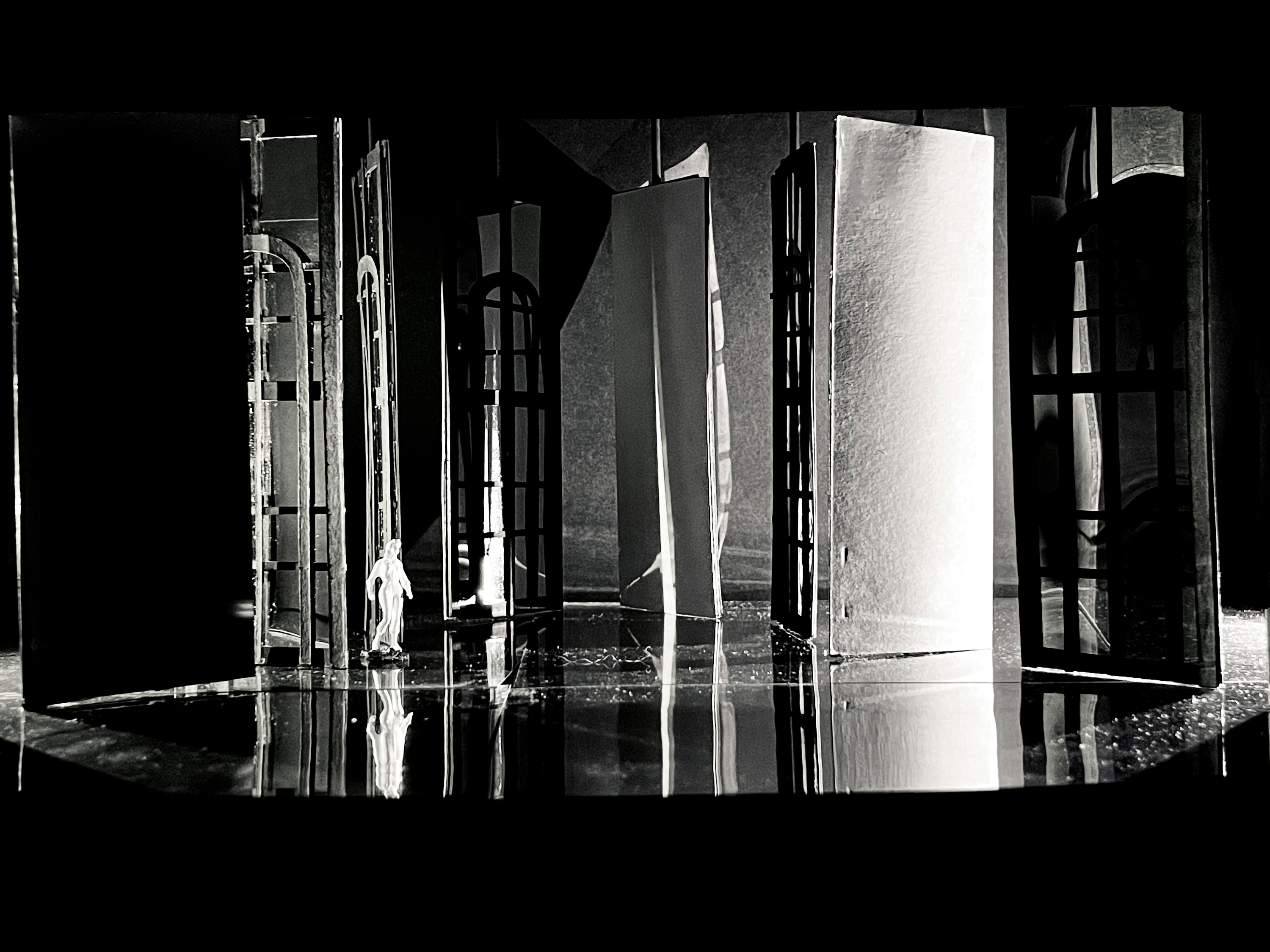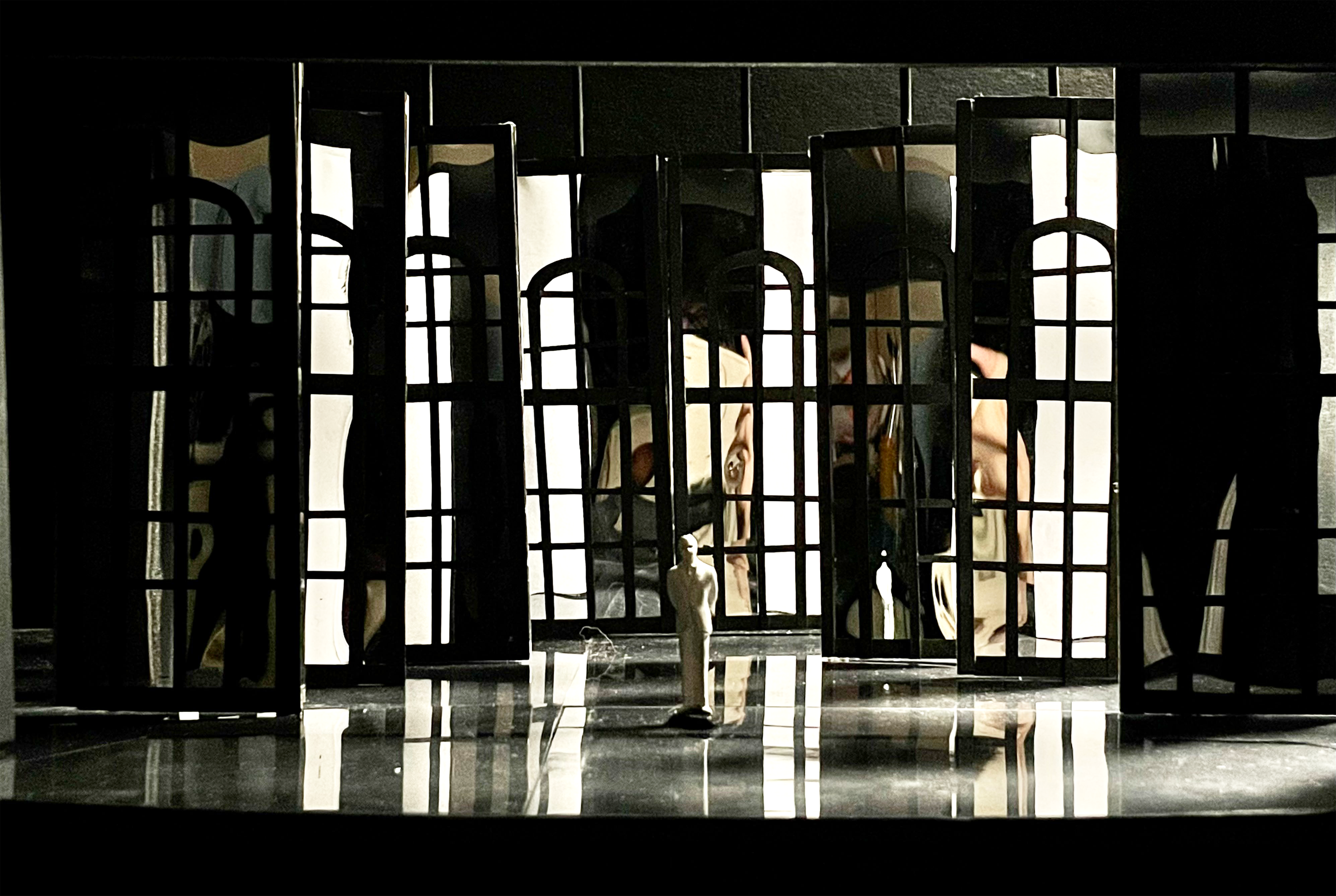Set Design
Inspired by the metaphorical ideas and similarities of bird cages and windows to allude to the struggles of Orlando with gender norms, societal constructs and expectations, 8 pivoting vertical elements span across the stage to frame both intimate and dynamic moments of the play.
Movements of panels create a sense of passing time and transformation of location with the accompanied use of lighting. Dual sides of the panels revolve to reveal a blank white panel or a mirrored panel overlaid with Victorian style window fixtures. Spaces between panels are designed to allow character appearances going on and off stage to be subtle and sudden in response to the fluid and fast paced structure of the play. Emphasizing on the journey of reflective self growth, reflections from the panels and floor become a constant reminder for Orlando to look inwards for answers to the meaning of life.
Following the complex journey of Orlando's life over 5 centuries, the panels revolve to form maze-like configurations to represent Orlando's confused and trapped perspective of the world. Eventually, the panels form an open configuration, allowing light to flood the stage as a representation of the euphoric feeling of freedom and enlightenment felt by Orlando.
Costume Design
Dressed in period costumes, main characters of the play conceal their true self or insecurities behind exaggerated costume elements. In an attempt to find his place within the world of the characters, Orlando follows suit with incredulous costumes up till meeting Marmaduke, who sets him on the path of self-discovery and acceptance.
Colour coded costumes for each character is used as a form of identity that is consistent throughout the centuries. Orlando's journey of self-discovery is further supported using the gradual shift of red, worn by the Queen to a colour of his own, pink. Colour theory is used as a storytelling tool when assigning colours for each character to hint at the relationship between characters. Colour discordance is also used in relation to the largely monochromatic set design to draw attention to the characters.
Using white as a neutral and static colour, Chorus' role as narrator is complemented by white costumes to suggest the absence of emotional interaction or attachment with other characters. The element of time is presented in the play through the Chorus, where all 5 of them each represent a century and serve as a definitive and constant guide of time to the audience.
Lyn
Wong
Performance Design
Lyn is a Malaysia-based designer with strong interest in a variety of design disciplines: costume design, pottery, motion design and film editing. During her time at the University of Melbourne as a major in Performance Design, Lyn has worked in a variety of design roles including Lighting Designer for Floorwork's Inkling (2019), Graphic Designer and Video Editor for UKC Bias Dance and Design Intern at a Malaysia-based IOT company.
With a passion for creating moving and intimate moments, she intends to fuse her interests with her skills to create impactful design works that resonate with her values. Graduating with a Bachelor of Design in 2021, Lyn is hopeful to continue on an endless path of discovery and learning from artists, designers as well as people from all walks of life and will continue to do so for many years to come.
Orlando




















